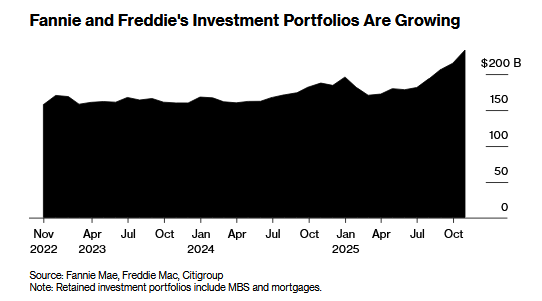A well-structured asset allocation strategy is the foundation of a resilient investment portfolio. It determines how your investments are distributed across different asset classes, balancing risk and return to align with your financial goals. Proper asset allocation can help you navigate market fluctuations, protect wealth, and optimize long-term performance.
In this article, we’ll explore the importance of asset allocation, the different asset classes, and strategies for adjusting your portfolio over time.
What Is Asset Allocation and Why Does It Matter?
Asset allocation refers to the way an investor divides their investment portfolio among different asset classes, such as stocks, bonds, and real estate. It plays a crucial role in risk management and return optimization, ensuring that no single market event can significantly derail financial progress.
Key Benefits of a Strong Asset Allocation Strategy:
✅ Diversification: Reduces exposure to market volatility by spreading investments across multiple asset types.
✅ Risk Management: Lowers overall portfolio risk by combining assets that perform differently in various market conditions.
✅ Consistent Growth: Provides long-term stability by balancing high-growth assets with safer investments.
A well-diversified asset allocation strategy ensures that your investments remain resilient in both bull and bear markets.
Understanding Different Asset Classes
Each asset class has unique characteristics that affect risk, return, and overall portfolio performance.
1. Stocks (Equities)
Stocks represent ownership in companies and have historically provided higher returns over the long term.
- Pros: High growth potential, dividends from certain stocks.
- Cons: Higher volatility, sensitive to market downturns.
- Best for: Long-term investors who can tolerate risk and market fluctuations.
2. Bonds (Fixed Income)
Bonds are loans investors provide to governments or corporations in exchange for periodic interest payments.
- Pros: Lower risk, steady income, helps stabilize portfolios.
- Cons: Lower returns compared to stocks, affected by interest rate changes.
- Best for: Conservative investors seeking stability and income.
3. Real Estate
Real estate investments, including rental properties and REITs, provide income and potential appreciation.
- Pros: Inflation hedge, passive income potential.
- Cons: Requires management, can be illiquid.
- Best for: Investors looking for diversification outside of traditional stocks and bonds.
4. Cash and Cash Equivalents
Cash, money market accounts, and short-term Treasury bills provide liquidity and security.
- Pros: Low risk, quick access to funds.
- Cons: Minimal growth potential, may not keep up with inflation.
- Best for: Emergency funds and short-term savings.
A balanced mix of these asset classes creates a well-rounded resilient investment portfolio capable of withstanding market volatility.
How to Adjust Asset Allocation Over Time
Your asset allocation strategy shouldn’t remain static. It should evolve with your financial goals, risk tolerance, and market conditions.
1. Age and Time Horizon Adjustments
- Younger investors can allocate more towards stocks for higher growth potential.
- As retirement approaches, shifting towards bonds and conservative assets reduces risk.
2. Economic and Market Conditions
- During economic booms, stocks may be favorable.
- During downturns, safer investments like bonds and gold can provide stability.
3. Rebalancing Your Portfolio
- Annual Reviews: Assess portfolio performance and make adjustments.
- Rebalancing Triggers: If one asset class grows disproportionately, rebalance to maintain your target allocation.
Regular portfolio reviews ensure that your asset allocation strategy remains aligned with your long-term objectives.
Final Thoughts: Building a Resilient Investment Portfolio
A strong asset allocation strategy is key to a resilient investment portfolio that balances risk and reward. By diversifying across stocks, bonds, real estate, and cash, you can protect your investments while optimizing growth.
To ensure your asset allocation strategy aligns with your goals, consider working with a financial advisor.
At RIA Advisors, we help investors design personalized asset allocation strategies that adapt to market changes and evolving financial needs.
Contact RIA Advisors today to build a resilient portfolio tailored to your long-term success.
Frequently Asked Questions (FAQs)
How do I determine the best asset allocation strategy for me?
Your asset allocation should be based on your financial goals, risk tolerance, and investment time horizon. A financial advisor can help tailor a strategy to your needs.
How often should I rebalance my portfolio?
It’s recommended to rebalance at least once a year or whenever your asset mix shifts significantly due to market movements.
What’s the difference between asset allocation and diversification?
Asset allocation determines how your portfolio is divided among asset classes, while diversification spreads investments within those asset classes to reduce risk.
Should I change my asset allocation as I get older?
Yes. Younger investors can afford more exposure to stocks, while retirees may prefer a more conservative mix with higher bond allocations.
Can real estate be part of my asset allocation strategy?
Yes. Real estate provides income and acts as a hedge against inflation, making it a valuable addition to a diversified investment portfolio.
The post The Importance of Asset Allocation in Building a Resilient Investment Portfolio appeared first on RIA.
Full story here Are you the author? Previous post See more for Next postTags: Featured,newsletter

































